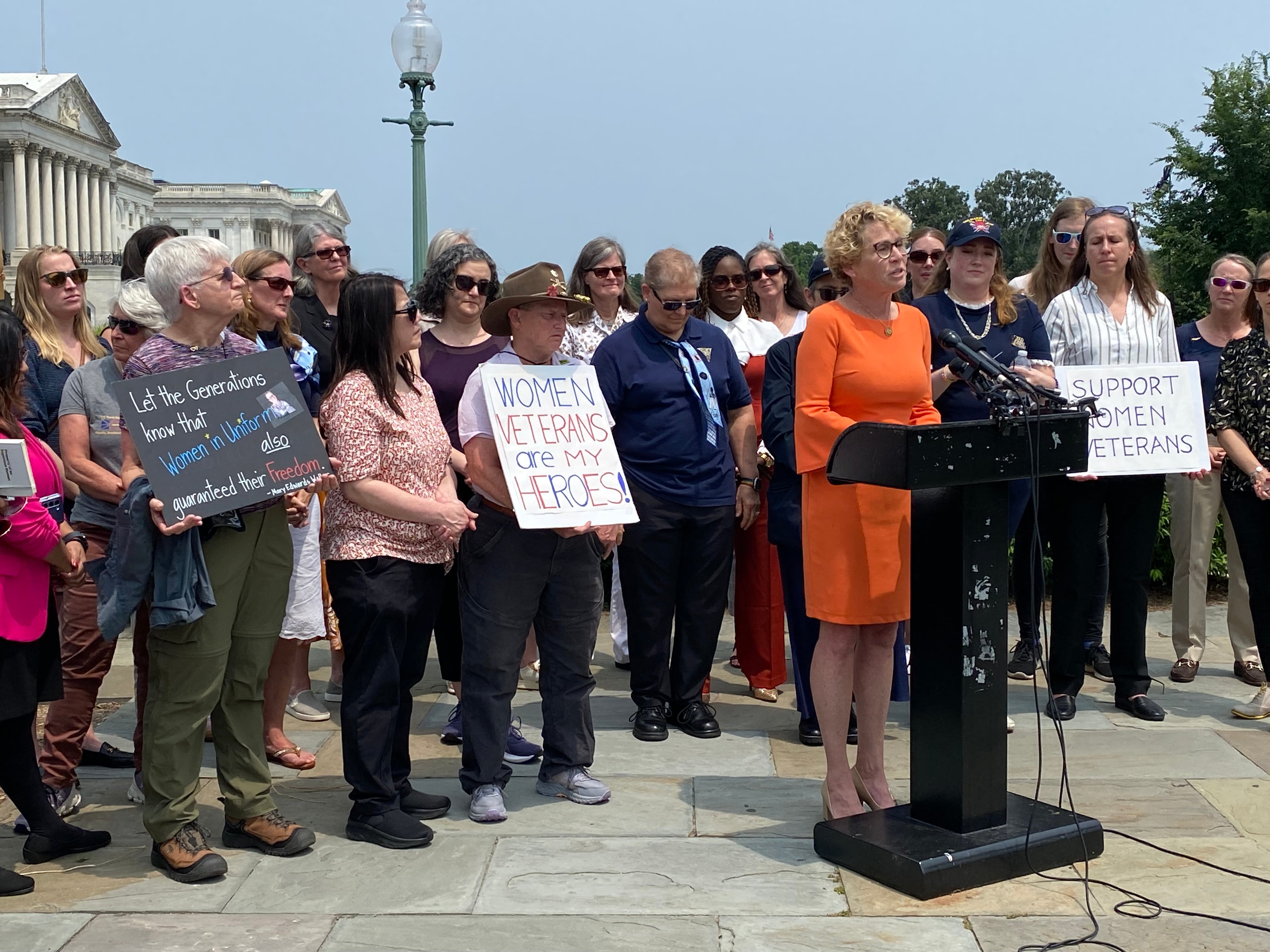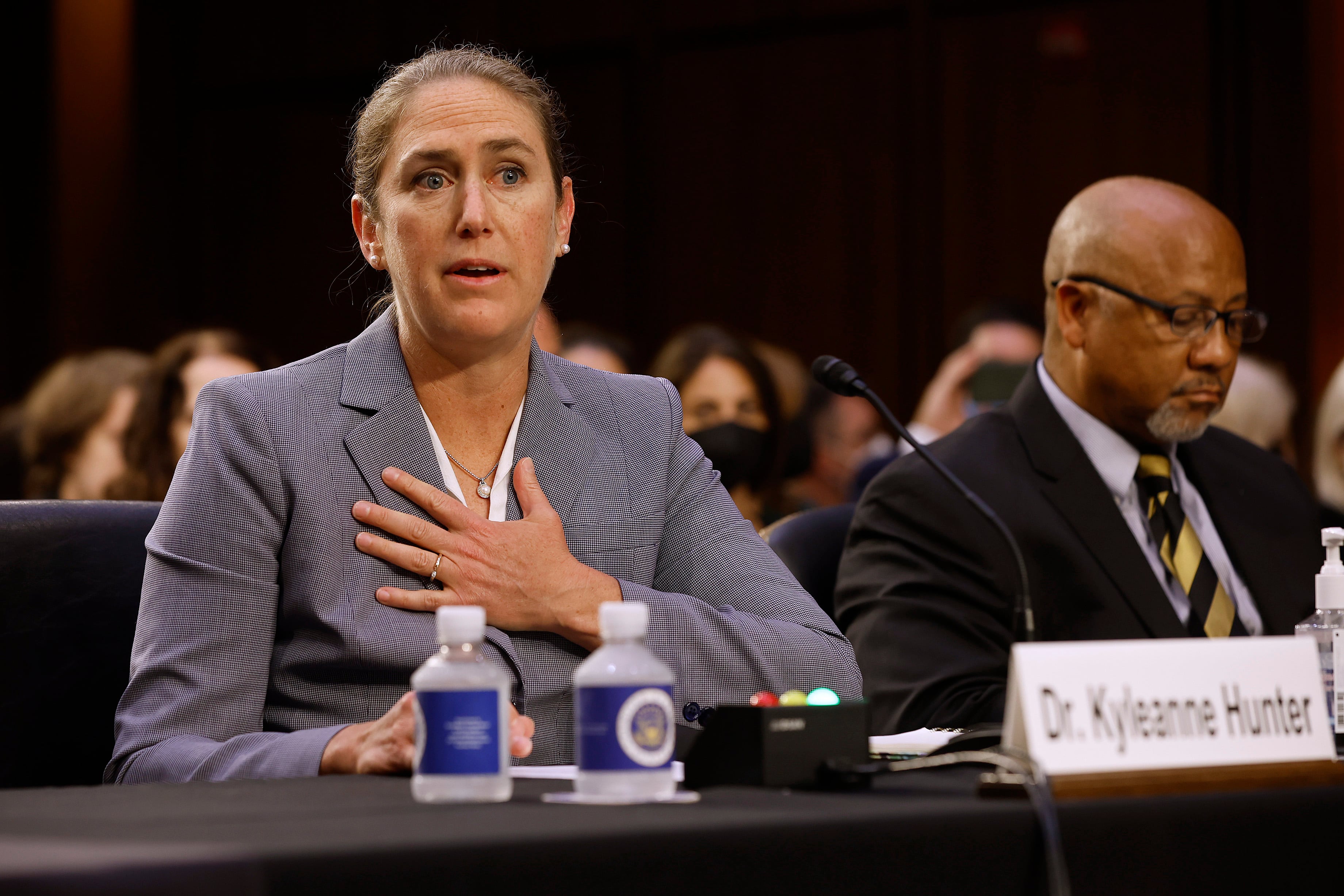WASHINGTON – A deal to buy three amphibious transport docks and an amphibious assault ship together in a first-of-its-kind contract appears to be falling apart, as the Navy is not ready to commit to buying so many amphibious ships before it finishes a study on future needs.
During a Senate Armed Services Seapower Subcommittee hearing, Sen. Roger Wicker, R-Miss., asked Navy leaders about the status of the proposed multiyear procurement deal for amphibs and why some expected advanced procurement funding for the LPDs was missing from the fiscal 2022 budget request.
“We have finished negotiating with [Huntington Ingalls Industries’ Ingalls Shipbuilding] to document a contract structure that could be put in place to implement the four-ship procurement that you’re referring to. We just finished that up about a week ago, so we have a handshake agreement on what that would look like if we were to actually enact that into a contract,” acting Navy acquisition chief Jay Stefany said at the June 8 hearing. “We packaged that up, and we’re sending it to the department leadership for a decision and get that in place before the authority expires at the end of this year.”
In the FY21 defense authorization bill, Wicker and other lawmakers pushed to include authority for the deal. The Navy has so far purchased 15 San Antonio-class LPDs in single-ship contracts, even though it has said repeatedly that multiyear procurement contracts for stable shipbuilding programs are the best way to save money and provide stability to the shipbuilding industrial base. Ingalls Shipbuilding, which builds both the San Antonio-class LPDs and the America-class LHAs, is in Wicker’s home state of Mississippi.
“But I’ll just let you know, the initial indications we’re getting from the department is that they would like to defer this decision” until they complete a force structure assessment associated with FY23 budget planning. The analysis will take place throughout the summer and fall, making it unlikely the Department of the Navy would be ready to make a decision before the authority expires at the end of the fiscal year, on Sept. 30.
“The commitment of four ships at once, they would like to defer that commitment until they are able to make that force structure assessment. So right now, indicators are that we are not going to be able to execute that – but it’s not a done deal, it’s going through the process within the department for a final decision,” Stefany said.
The Navy and Marine Corps spent the bulk of 2019 and early 2020 working on a new force structure assessment that took into account changes in how both services intend to fight in the future. That analysis was then wrapped into a larger look by the Office of the Secretary of Defense under Mark Esper, who spent about nine months wringing out modeling and simulation and war-gaming lessons learned before releasing his Battle Force 2045 plan.
Another assessment this summer suggests the Biden administration is taking its own look at future fleet needs. It’s unclear where the administration might be headed, since the FY22 budget request that was released on May 28 was not accompanied by a long-range shipbuilding plan. Stefany said during the hearing that the ship plan was in the final approval process and would be sent to Congress soon.
Wicker asked during the hearing: “this Congress, this legislative branch, the House and the Senate, exercising its power of the purse could reverse this and give you those ships back which you had planned to do for years now. Would you be in a better position in the Pacific to meet the challenge?”
“The simple answer is, yes, sir,” replied Vice Adm. Jim Kilby, the deputy chief of naval operations for warfighting requirements and capabilities (N9) on the chief of naval operations’ staff.
He said the LPDs have much greater combat capability than the dock landing ships (LSDs) they replace, and similarly the Flight III Arleigh Burke-class destroyer that was cut from the Navy’s planned shipbuilding request has much greater capability than the Ticonderoga-class cruiser it would have replaced.
“The budget request you see before you is where we tried to create the best mix of capabilities and platforms and follow the prioritization” agreed to by the Pentagon and the Navy, which was the Columbia-class ballistic missile submarine first, then readiness for today’s fleet, then lethality for tomorrow, and then growing the fleet size, Defense News previously reported.
The top line the Navy faced, Kilby said, “necessitated hard choices for us.”
Megan Eckstein is the naval warfare reporter at Defense News. She has covered military news since 2009, with a focus on U.S. Navy and Marine Corps operations, acquisition programs and budgets. She has reported from four geographic fleets and is happiest when she’s filing stories from a ship. Megan is a University of Maryland alumna.





